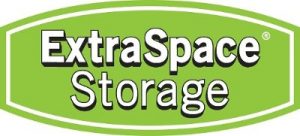
Proven Products
Top 10 Tech Tools For Self-Storage Owners
By Bron McCall
It’s not up to self-storage owners to decide if they will use tech tools. Rather, it’s simply a question of how soon successful owners will decide to take advantage of customer-friendly, revenue-growing technology. The sooner, the better!
As a self-storage facility owner, you don’t have to adopt each new technology that hits the market. Prioritizing is important. This list will help guide you, but don’t wait to implement useful technology. The perfect time to start using technology to grow your business is right after you acquire or develop an updated and properly functioning facility with trained staff. It’s true that technology is always changing, but these 10 tech tools are established
and relevant.
1. Store Management System: A store management system keeps important information organized and promotes efficiency. Plus, it never hurts to receive those task reminders. The system automates tasks and keeps track of details such as how many units are available and who has paid. In addition to the increase in efficiency that comes with a store management system, another major reason to have one is that it enables online reservations and payments on your website. Even if you don’t currently have the capability to allow customers to make online reservations and payments, think of your store management system as a home base from which to expand.
Choose a management system that meets your needs and budget. The most important thing is that the system does what you need it to do. There are many options, including high-end systems designed for larger companies and simpler systems for owners with a handful of properties. While customers may never actually see your store management system, they can feel the effects. Using a management system will help you help customers and allow you to grow.
2. Website: In the past, the majority of self-storage
customers found storage by driving around town or by looking in the Yellow Pages, but those days are long gone. When they’re looking for something, most customers today turn to the Internet. If you’re not there, you’re losing potential business. While it’s good to have an online presence, it’s also important to cultivate the right presence. Potential customers make judgments about your business based on your website. If it’s not attractive or easy to navigate, customers may think that it won’t be so easy or enjoyable to do business with you.
Today, having an attractive and easy-to-use website is just the beginning. More than ever, customers expect the convenience of making online reservations and payments. If you’re not there yet, don’t worry. A good website with your contact information, as well as unique property information, will also guide customers to you. And, of course, using good search engine optimization practices will help customers find your website.
3. Mobile-friendly Website: In this digital age, customers have nonstop fingertip access to the Internet. In fact, mobile Internet usage has exceeded desktop Internet usage. Your new customer may be in a car a mere mile from your facility. Help that customer find you by making sure your website is mobile friendly. Why go to the trouble? If your website is difficult to use on a mobile device, your potential customer may quickly move on to a competitor. A mobile-friendly website for self-storage companies should include information on unit sizes and pricing as well as contact information.
There are a variety of ways to make your website mobile friendly. Some popular content management systems like Drupal and WordPress allow for solutions that don’t involve having two separate websites. Ultimately, your goal is to adopt a mobile-first responsive design. That means your website design should be responsive to what your customers are trying to do on it. If you have an existing website that isn’t mobile friendly, you can use stopgap solutions until you have the ability to redesign your entire site to make it more compatible with mobile usage.
4. Google: It may seem silly to list Google as a tech tool, but it most definitely is one. Businesses can’t afford to ignore Google. If your website is optimized for search, Google will send visitors your way; there are also simpler ways to make Google work for you. One way to use Google as a tech tool is to claim your Google listing. When you claim your business listing on Google, you ensure that the information presented is accurate and helpful. In short, you gain the ability to control how your business appears on Google Search and Google Maps. You have nothing to lose. Claiming your Google listing is free, but it’s not the only way to put Google to work.
You can use Google Analytics to monitor how customers use your website. With Google Analytics, you’ll gain valuable insight into the behavior of your website audience. You’ll know where visitors are coming from and what parts of your website capture their attention or make them bolt. Google Analytics is free for the basic service, and it’s quick and easy to implement.
5. Aggregator: Using an online aggregator of self-storage listings is a cost-effective method to gain new customers. While owners pay for each lead that comes from an aggregator, it’s more affordable to use such a service rather than trying to find good leads with more expensive in-house resources.
Aggregators use all of their tech tools and the marvel that is the Internet to collect valuable leads for facility owners. To customers, the websites run by aggregators are self-storage marketplaces. To owners, they’re an opportunity to get in front of many more potential customers.
6. Live Chat: Customers may like shopping online, but they also appreciate having live help.
When a visitor to your website has the ability to click to chat with a real person, your business benefits. Live chat is convenient for customers who don’t have the time or desire to make a phone call or send an email. It helps build rapport and strengthen relationships with existing and potential customers.
Another benefit to using a live chat service is the transcripts. Analyzing chat transcripts can help you identify customer pain points and areas of weakness in training. Transcripts from live chats also prove useful for creating responses for frequently asked questions. Some popular live chat providers include Bold Chat, LiveEngage, Livezilla, and Kayako.
7. Email: In addition to calling you, customers should have the option to communicate electronically. When a customer provides you with an email address, you’re gaining a valuable means of communication. One of the best ways to stay in touch with customers is through email. It’s an efficient and affordable way to remind customers about reservations or payments or even just to send tips on organizing a storage unit.
Your store management system can help you communicate with customers via email for reservation reminders and other messages, but marketing services, such as MailChimp, are also available. Some customers may also opt-in for receiving text messages from your business, but it’s important to receive permission before sending messages and to limit the number of messages sent to customers.
8. Cloud Applications: Many businesses today are taking advantage of the cloud to offer services that can help owners operate more efficiently. Cloud-based solutions are generally affordable and easy to use.
One example of a useful cloud-based business solution for owners is DocuSign. Using a service like DocuSign for storage leases allows you to have a paperless office and it speeds up the rental process. After signing a lease with DocuSign at the storage facility, the customer receives an email with the lease agreement.
Cloud-based document scanning services are also helping storage businesses everywhere to be more organized and much more paperless. Using a document scanning service means you not only free up office space, you also gain the ability to quickly find needed information with digital searches. Digitally “filing” your documents reduces clutter and improves information security. Original documents may be shredded and returned to you.
Box is another useful cloud-based service. It’s a content management and collaboration platform designed with our digital-age work styles in mind. Box allows you to review, create, and edit documents with others in real time. Dropbox, which originally catered mostly to consumers, also provides similar services and is used by businesses.
9. Online Auctions: In-person auctions might make for interesting reality television, but they aren’t necessarily the best solution for storage businesses. Storage auctions are moving online, and that’s a good thing. If you implement online auctions for the contents of abandoned storage units, a third-party provider will post pictures and other necessary information for the auction on their website. Registered users place bids and the winner receives a confirmation number to take to the storage facility. The winner of the auction typically has 24 hours to clean out the unit. Storage Treasures, the current online auction provider for Extra Space Storage, is just one of several online auction services for the storage industry.
Your business may benefit from moving auctions online. Online auctions eliminate distractions for your operations team as well as for current customers trying to get into their storage units. Also, with online auctions, there’s no mess left behind by bidders. In addition to increasing efficiency in operations, online auctions help bidders by allowing them to participate in several auctions at the same time as well as save travel costs and time on lost auctions. A potential bonus for storage facilities using online auctions is that a delinquent tenant may be more motivated to pay a bill and cancel the auction after seeing belongings at an online auction with the clock ticking.
10. Infrared Temperature and Humidity Sensors: While the self-storage world isn’t typically very gadget-oriented, an exception can be made with extremely useful and cost-effective infrared temperature and humidity sensors. With minimal training, facility managers can begin using
infrared sensors and potentially lower operating costs.
Managers using infrared sensors can quickly check the temperature and humidity in climate-controlled areas of the facility. Using a sensor can help cut down on costs from overcooling or overheating. The sensors also help ensure that belongings are protected and those premium climate-controlled units are comfortable for customers.
Keep Track
When adopting new technology for your self-storage business, don’t be afraid to make an investment. When you stick with established and recommended tech tools, you’re more likely than not making a really smart investment.
Tools like store management systems and websites come with a price, but they’re wise investments. If you keep careful track of expenditures for tech tools, you can compare those costs with your results and figure out your return on investment. When implemented wisely, the tech tools discussed above can do a lot for your bottom line.
Bron McCall is the chief technology officer at Extra Space Storage.










